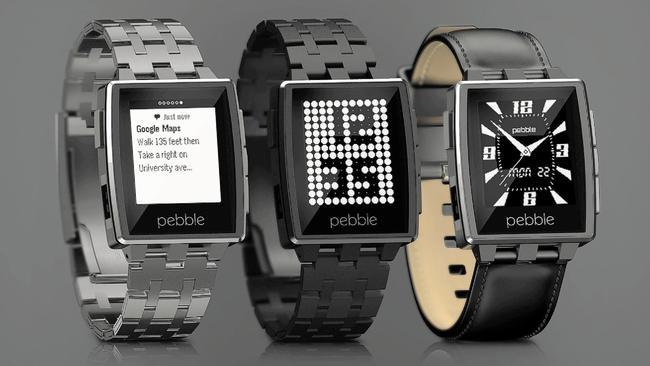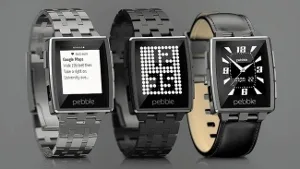The Wearable-Flexible Market Focus Conference organized by IHS at SID’s 2015 Display Week featured a presentation by Andrew Witte, Founder and CTO, Pebble Technology. The Pebble smartwatch (pictured below) initially funded through crowd funding platform Kickstarter, was the first smartwatch to reach any level of scale and more than a million of the original watch design were sold.
 Source: Pebble Technology
Source: Pebble Technology
Pebble now finds itself with considerable competition from the likes of Apple and Android Wear as reported recently. In the SID Wearable Conference the presenters spoke of “the new wearables ecosystem” and of “marrying design, fashion and technology”. To date, smartwatches and fitness bands have exemplified these developments.
In his talk, Andrew Witte spoke of the movement toward wearable devices and wearable computing. He noted the continuum of computing applications trending from mainframes to wearables, yielding a computing device that is “the closest to you a device has ever been” emphasizing the very personal nature of wearable computing devices. The nature and attributes of wearable devices he cited were that the devices are “small, always with you, yet interactive (on a time scale which is) brief, even hurried”. Wearable devices are absolutely required to be comfortable, ergonomic and reflect fashion – “One size does not fit all”, a phrase we had already heard, from the likes of Google and others, during the Wearables Conference.
Witte remarked that a wearable device must “provide the right user interface”, and that in regard to the UI we can learn from handheld devices. However, rather than thinking of the device as a gadget, it is necessary to think of the device as a platform. Witte remarked simply that “Apps were the killer app”. That is, apps allow the device to morph into the device you want in the moment. “As devices get (physically) closer to (the user) the interface needs to change”. Pebble’s take on the user interface is to implement its Timeline Architecture which Witte said gets information out of apps into a unified organized view so as to “make the most of brief glances”. Moreover, apps take action at just the right time.
Pebble believes that extensibility is important and thus gives access to its platform to third party developers. Asking “how does this (the UI) inform device (physical) design”. Witte noted that maximum legibility is necessary to get the most out of brief interactions with a wearable device. Next he acknowledged that device designers need to take into account the wearer’s intentions, saying, “Be ready for any environment… wearables go everywhere with us”. In conclusion he remarked, “If we get this right, wearables will be the next great computing platform”.
Analyst Comment
In reflecting on the Pebble talk, it was clear that Witte and Pebble have thought long and hard about the state of available technology and the detailed nature of the human centered design challenges of wearable devices. As I looked over the audience in the SID Wearables Conference, I noted that the proportion of women in the audience was higher than is typical for SID technical or business sessions. This observation may be a result of the fact that wearable devices sit at the nexus of technology and fashion. If wearable devices are to be successful and see large market adoption, all viewpoints need to be brought to the table. – Phil Wright

